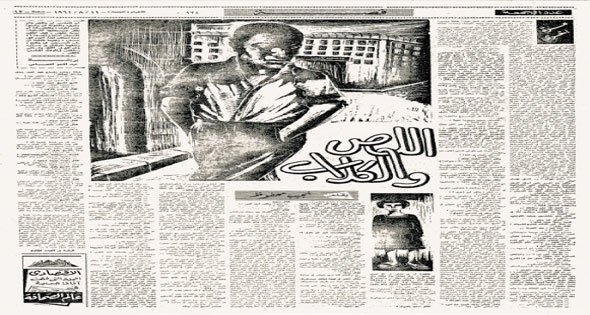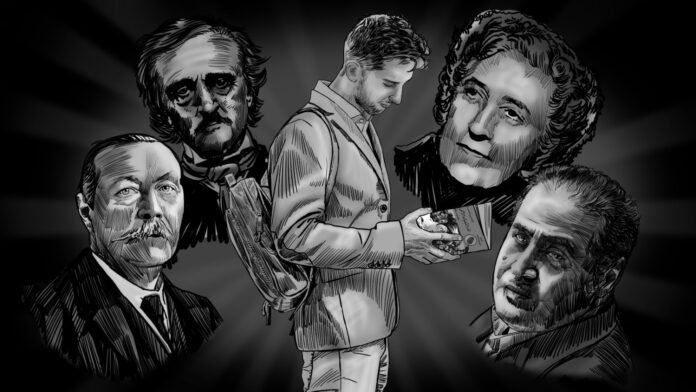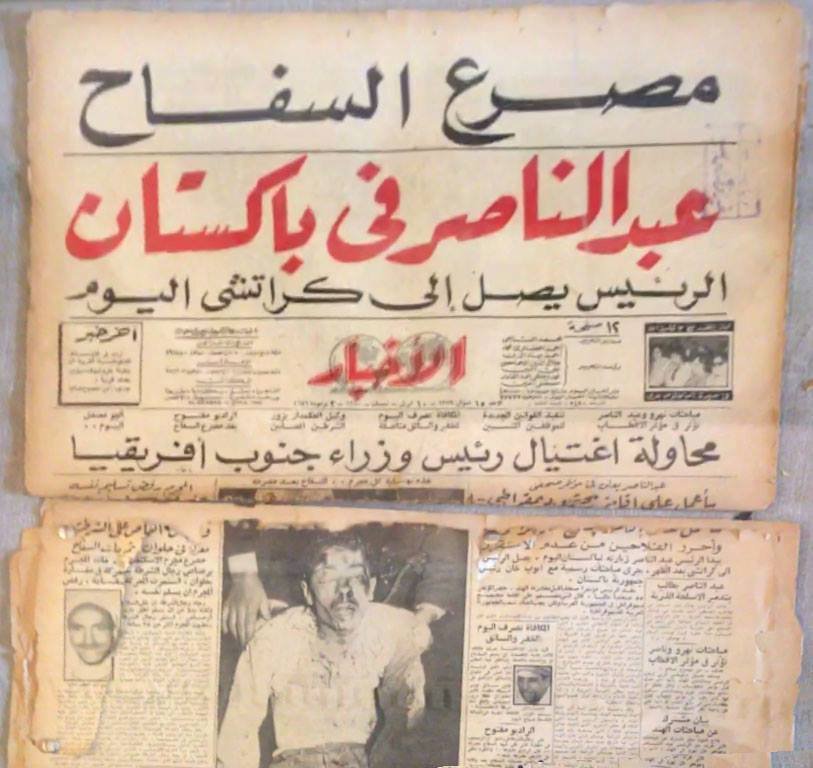In front of a small kiosk, I impatiently waited to buy issues from the detective series The Five Adventurers. I left carrying them like a precious treasure that opened infinite worlds before me. Then, I quickly moved from Agatha Christie’s novels to the adventures of detectives on trains in countries I never knew existed.
In my small room, characters from every novel I immerse myself in leap out in front of me, filling the space with their adventures from the realm of crime fiction.
What exactly is crime fiction?
Crime fiction varies from classic detective novels to bold contemporary works, becoming one of the most intriguing literary genres over time.
The origins of crime fiction trace back to the Middle Ages, profoundly impacting global culture.
Initially, it adopted a form inclined towards popular entertainment and oral storytelling, where myths and fairytales significantly shaped the crime narrative and the hero who reveals it. Over time, newspapers were significantly influenced by this style of writing, making crime journalism an integral part of the incident reports section. They utilized investigative techniques to delve into the shadows, specifically focusing on puzzles the police had not solved. This led to some newspapers hiring private detectives to uncover and fill those incomplete truths.
Despite their significance and popularity, these investigations were initially limited to small sections in newspapers revisiting certain criminal elements. However, these sections gradually expanded with the increasing complexity of societies and the diversification of their interests. These investigations eventually became a major part of the newspapers, where authors began incorporating crime elements into their literary works, significantly contributing to the formation of crime fiction’s identity.
In the nineteenth century, the appearance of crime fiction significantly increased in Europe, especially in Britain and France. The public’s fascination with crime news played a significant role in encouraging authors to utilize their literary techniques to document the crimes occurring within society. This led to the emergence of the detective novel and the establishment of crime fiction in general, eventually becoming one of the most widespread literary genres in the world.
Arthur Conan Doyle and Agatha Christie are considered among the most prominent authors of this genre, where their novels blend excitement and appeal to readers with their easy language and challenges to intelligence and imagination.
The discussion of crime fiction cannot proceed without mentioning the American Edgar Allan Poe, one of its most influential pioneers. In fact, the term “Polar” is attributed to it.

As well as the novel Perfume: The Story of a Murderer by Patrick Süskind, published in 1985. The story tells of a baby boy who was born to his mother in one of the French fish markets and was immediately abandoned by her as she threw him into a garbage dump. He was passed from hand to hand until he ended up in an orphanage, where he spent his childhood ostracized. Later, he began working in a leather tannery, which became a turning point in his life. It enhanced his extraordinary sense of smell, prompting him to start distilling the scents of various things, including the smells of humans and metals.
The situation escalated to the point where he killed a large number of girls to extract the scents from their bodies, with the goal of creating a unique perfume that no one had ever made before. In the end, he was caught, but he used his perfume by pouring it on his body, which caused everyone, including his jailers, to be madly impressed by him, leading to his release. However, after that, anyone who smelled his scent became hysterically attracted to him until his body disappeared due to being devoured by thousands of hands, leaving behind only his clothes and the empty bottle of his perfume.
The novel achieved great fame then was adapted into a movie in 2006 bearing the same title as the novel, and it also met with great success.
In the Arab world in the 8th century AD, we find the beginnings of crime fiction in the story of the murdered girl in one of the tales of One Thousand and One Nights, also known as the story of the Three Apples. This story narrates that Caliph Harun al-Rashid found the body of a girl in a chest that a fisherman had pulled up in his net from the Tigris River.
The Caliph charged his minister, Ja’far the Barmakid, with finding the killer and gave him a three-day deadline or else he would be executed. When the minister failed, and the Caliph was about to carry out his threat, two men, one an elderly sheikh and the other a young man in the prime of life, each claimed to be the killer, increasing Harun al-Rashid’s confusion.
However, chance played its role, and the Barmakid minister discovered physical evidence in an apple with his daughter, which led to solving the puzzle. The gist of it is that the real killer was the minister’s slave, who claimed that his lover had given him an apple that her husband had bought for her from another distant city, and she had not eaten it because she was feverish. This feverish woman was none other than the daughter of the elderly sheikh and the wife of the young man, who, upon hearing the slave’s lie, was about to kill his wife. Therefore, the slave was the main instigator in the murder crime.
In the modern era, the novel The Thief and the Dogs (1961) by the Egyptian writer Naguib Mahfouz is one of the prominent examples of the use of crime fiction as a driver for events and a means for reflection on values and social transformations in Egypt. The author relied on a real crime story in Alexandria in the early 1960s, followed by newspaper reports. Mahfouz used crime fiction as a context to reveal many societal problems and contradictions. Additionally, the novel was adapted into a movie bearing the same title in 1962.
The true story revolves around Mohamed Suliman, whom the Egyptian newspaper Al-Ahram dedicated coverage to in 1960, occupying public opinion for almost two months until the police surrounded him, and he was killed in April of the same year.

The perpetrator was characterized by sharp intelligence, enabling him to hide in multiple situations. He even managed to escape from the police after being apprehended more than once. His crimes included burglaries of celebrities and wealthy individuals’ homes in the cities of Alexandria and Cairo. For instance, he stole from the house of the prince of poets, Ahmed Shawki, and the singer Um Kulthum. However, after his release from prison, he decided to take revenge on his wife, who filed for divorce against him because he was sentenced to several years in prison.
The Egyptian law states in Article 14 of Law No. 25 of 1920 that: “For a wife of a husband who is finally sentenced to a term of imprisonment for three years or more, she may request from the judge, after one year of his imprisonment has elapsed, a divorce from him, and if he had money, she could spend it on herself.”
Then, the wife quickly remarried after the court divorced her from him to another person. He imagined that she and her lawyer conspired against him to incriminate and imprison him so they could marry. Hence, he attempted to kill them more than once.
One of the ironies that angered President Abdel Nasser was when the Egyptian newspaper Al-Ahram published on its front page a headline in bold letters that read “Death of the Murderer,” followed by another headline below it, but without a separator between them, titled “President Abdel Nasser in Pakistan.” This led to the headlines being read as if they said, “Death of the Murderer Abdel Nasser in Pakistan.”
As for Dr. Nabil Farouk, considered one of the most famous writers of detective fiction in the Arab world, he decided to devote himself entirely to writing in this art despite graduating from medical school. He achieved great fame through his series The Impossible Man, published between 1984 and 2009. The series revolves around an Egyptian intelligence officer named Adham Sabri, who possesses several combat skills and has mastered several languages, enabling him to embark on thrilling adventures worldwide.
Farouk has received several awards in Egypt and the Arab world, including the Encouragement State Award in Literature as official recognition of his contributions to the field of detective novels.
Before Nabil Farouk, Mahmoud Salem inspired young readers with his puzzles and adventures, embodied in the heroes of The Five Adventurers series (1969). Salem chose ordinary heroes instead of fictional characters like Superman, aiming to enrich children’s imagination and stimulate logical thinking.
The series’ heroes are five children between the ages of nine and fourteen: Nusa, Luz, Tukhtukh, Atef, Mahboub, and their dog Zinger. The events revolve around crimes of theft, kidnapping, or espionage and end with the five adventurers solving the mystery and catching the culprit.

Among the Arabic crime stories, one that remarkably captures the reader’s attention is the novel M for Murderer: S for Sa’id (2021) by the Kuwaiti author Abdullah Albsais. The novel uses the Iraqi invasion of Kuwait as a historical setting for a murder mystery, where the detective Majed investigates to uncover the secret of a case that was closed 23 years ago without a solution concerning the disappearance of a young Said Jonkar.
In general, crime fiction in the Arab world can be divided into two types: the first relies on police plots and puzzles, while the second addresses crime as an act and as a human condition.
These examples show how the genre can be a means to explore ethical and social issues in society and, thus, how it can be inspiringly included in contemporary Arabic literature.
However, it is observed that, in general, Arabic literature lacks a significant focus on crime novels and the world of crime, especially when compared to Western literature. Even though there are high examples within Arabic detective literature, they do not enjoy the same level of popularity and impact on the Arabic literary cultural landscape as a whole, possibly due to the societal norms and the way crime and suspense themes are perceived and engaged with.
The influence of crime fiction on the visual arts, especially cinema and television, has emerged, reflecting its expansion and impact in the media world. This is particularly evident in the adaptation of the same genre into films and television series, providing fans of this crime fiction with the opportunity to explore the characters and plot developments in new and exciting ways.
For example, the Egyptian drama introduced the series The Giza Killer (Hadi el Bagoury, 2023), which has gained widespread admiration on social media platforms. The series immerses us in a world of crime and suspense, drawing its inspiration from the life of the actual serial killer, Qaddafi Faraj Abdel Aaty, who captured the public’s attention with his horrific crimes in 2020.

The series narrates, in an engaging and thrilling style, the story of a serial killer in the Giza Governorate of Egypt, blending reality with fiction to craft a gripping experience.
It features horrifying events, prompting to specify an appropriate viewing age and assign it a +18 rating.
The series skillfully transitions between its events and the life of the actual serial killer, Qaddafi Faraj Abd Al-Ati, who lived in the Giza Governorate. He used Alexandria as a hiding place and assumed various identities.
The Giza Killer is not the only work inspired by real crimes in Egypt. Such an approach is considered part of the history of Egyptian drama, where many productions were inspired by stories of crimes and real incidents that shook public opinion.
One of the crimes that was transformed into many dramatic, cinematic, and television productions is the story of Raya and Sakina, which stands out. It is based on the story of the two sisters who baffled the authorities in Alexandria between 1919 and 1920.

This series highlights the role of the prosecutor who, through innovative interrogation techniques, managed to win over the child Badi’a, the daughter of the murderer Ria, to guide them to the location of the bodies. This allowed him to build a strong case based on the available evidence, the witness Badi’a, and the bodies, leading to the charge of premeditated murder against 17 women. They were convicted in court, making them the first two women to be executed in modern Egyptian history.
Generally, these artworks reflect dark aspects of criminal history, enhancing engagement and dialogue around these issues compellingly for viewers.
Crime fiction continues to exert its influence and create new audiences, making contemporary writers see this genre as a means to understand and engage with societal transformations in innovative ways.
These modern Arabic novels showcase the ongoing interaction between crime fiction and cultural transformations, enabling Arabic literature to renew and modernize itself.
Crime fiction can contribute to expanding and diversifying the horizons of Arabic literature, as it reflects the dynamic interaction with social and cultural transformations. It remains one of the most influential literary genres, where writers create exciting stories highlighting dark and complex aspects of life and society.
Little by little, crime novels became very popular in the West and topped the sales charts, with many of them being turned into films that achieved great success.
Detective novels are characterized by their reliance on popular literature. Readers expect to find a tight plot and significant suspense, which draws them into the novel’s world. This transformation turns them from passive readers into active ones who seek to distinguish the facts and fiction in the narrative, assuming the objectivity and credibility of events.
However, crime fiction still has a promising future horizon through continued innovation in this field. The current era is witnessing an increasing interaction between it and technology, primarily through the Internet and social media, which are critical keys to events.
Crime fiction in Arabic remains diverse and rich, serving as a means to deeply explore social, legal, and ethical issues. Its ongoing influence in contemporary Arab culture, including elucidating the legal process, underscores its significant role in enriching culture and shaping collective understanding.





